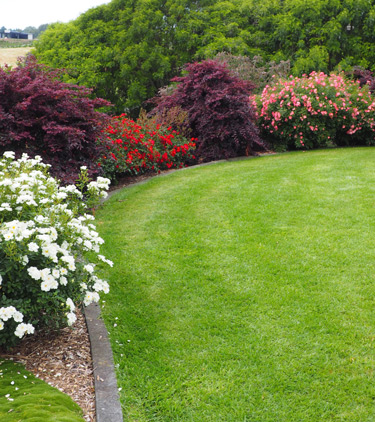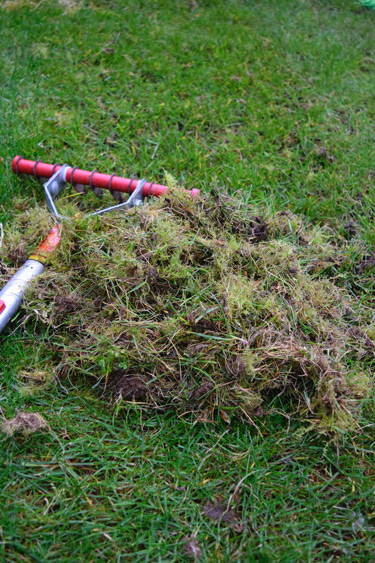Make me green
By the end of summer most lawns need some love. And autumn is the perfect time to make the switch from parched and patchy to smooth and green. Giving the lawn some love over the next month or two is one sure and simple way to give the entire garden a facelift that lasts.
When the soil is warm but the air is cool and moist, newly sown lawns germinate quickly and rocket onto growth for a strong healthy start. As a bonus, weed seedlings are generally less of a problem in autumn than they are in spring. Existing areas of lawn also respond well to any efforts to improve their soil at this time of year, putting on a verdant flush of growth before winter sets in.
The Root Zone
Lawn grasses are so tough that we almost forget they are actual plants. In order to grow properly, they need water and food - plus air around their roots. Relentless compaction of the soil removes those precious air spaces. And yet we expect our lawns to tolerate a lot more compaction than any other part of the garden with regular mowing, foot traffic and sometimes even car traffic.
If your area isn’t too large, using a garden fork to press holes over the lawn area is an effective way of reducing compaction and thus allowing more water and nutrients to get to lawn roots. For larger or more seriously compacted lawns, hire a good lawn care professional with the tools and expertise for the job. Or if DIY is more your style, you can hire a lawn coring machine.
Further blocking the passage of air, water and nutrients (and worse - encouraging fungus diseases), dead grass clippings build up on the soil surface over time. For this reason, an annual ‘dethatching’ is recommended. This can be done with a metal rake, used rigorously to remove the build up of dead grass.
Patching
A weed is more than just an ugly blemish in a smooth green pasture. It steals water and nutrients that would otherwise feed your lawn. Special tools are available to make hand weeding easy. If there are too many weeds to deal with by hand, a selective lawn weed spray kills the broadleaf weeds without harming the lawn grasses (or choose a combination ‘weed and feed’ product).
After removing weeds, resow bare and thin patches before new invaders claim their space. To prepare the seed bed, rake strongly to loosen soil and level out any hollows with weed free topsoil or lawn mix. Sow seed into moistened soil, ideally just prior to forecast rain.
Feeding
Feed lawns to make the most of the autumn growth. A well-fed lawn is not only greener but less weedy than a hungry one. Lawn fertiliser contains a balanced blend of nitrogen and phosphorus to promote rich green growth, with added iron sulphate to reduce moss. Water after applying fertiliser, or time it to coincide with a shower
of rain.
Watering
In autumn, the top layer of soil can get very warm and dries out quickly. Even after a shower of rain, the wind can quickly whip all moisture from the root zone.
Watering is critical for new lawns and a lack of it is the most common cause of patchy germination. A common mistake made by new gardeners is to water keenly for the first few days. Then, just as the seed starts to germinate, showing a reassuring hint of green, we miss a watering and effectively kill off precious new shoots - not conducive to a beautiful lush lawn!
On established lawns, regular deep watering is the best way to maintain deep healthy roots. How often you need to water will depend on the weather and your soil type.
For a successful lawn
- Know your soil
- Know your climate
- Choose a lawn that’s fit for use

7-Mar-2019


Removing the dead grass (thatch) and moss with a scarifying rake.

